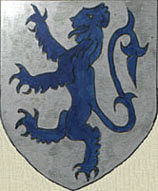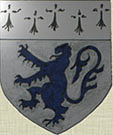HOW RICHARD ST AND WILLIAM
ST, NORTH SKELTON OBTAINED THEIR NAMES.
|
The following information is supplied by Simon A Chapman, the author
of many books about Ironstone mining in
East Cleveland.
One of your e-mail correspondents queried the building of the
terraced
houses at North Skelton.
BOLCKOW and VAUGHAN Streets were named after the company sinking the
new ironstone
mine on a greenfield site which made the construction of new houses
necessary.
Sinking really commenced in 1870, so these two streets were probably
built about then.
Soon followed by WHARTON Street, named after the landowner.
WILLIAMS Street was named after Edward Williams.
He was the General Manager for Messrs. Bolckow and Vaughan.
Edward Williams retired in 1875, so we can take it that by that date
the above
streets were completed.
His successor was E. Windsor Richards as General Manager (another
Welshman).
So when another street was built, 1876 or later, it was named after him.
On page 29 of my book "Hope to Prosper", published by Peter Tuffs, is a
copy
of the Ordnance Survey 1:2500 map of 1915.
This shows the outline of these streets and their orginal spelling.
The modern nameplates of WILLIAMS and RICHARDS Streets leave out the
's' and make them first names.
So, losing the historic significance of those names.
Another correspondent queried the name of the driver of the first
train
around Huntcliff.
Bear in mind that the Cleveland Railway from Skinningrove around
Huntcliff to Guisborough and beyond opened 21st April 1865 for mineral
traffic, and 10 years later for passengers.
The connecting line between Saltburn and Brotton over Skelton Beck
Viaduct opened 1st June 1872.
[New Skelton also has a WILLIAM Street, but here the naming was
almost certainly after members of the Wharton family
of Skelton Castle, at the time the houses were built in the 1870/80s.
JOHN ST and THOMAS ST after the estate owner John Thomas Wharton, who
died in 1900.
CHARLOTTE ST after his wife, who died in 1892.
And WILLIAM ST after their son, William Henry Anthony Wharton, born
1859.]
|
A LETTER FROM AMERICA - NESS
HAGG.

Map of 1856.
|
The following e-mail was received from L Harvey Kirk III of
Chester, Virginia, USA.
It concerns "Ness Hagg", which can be seen in the centre of
this 1856 map as buildings in the form of an inverted T with
what appears to be a walled area behind - presumably used for workshops
and storing oak, as the occupant, according to
Harvey, had been a cooper, a maker of barrels.
A map of 1894 shows that, even by then, some of the building
had disappeared and the area was being wooded over.
Today the whole area is woodland.
For the past 5-6 years I have been researching my family's
history with the intention of writing an historical genealogy.
The earliest ancestor I can document is Roger Kirk
He and his family were Quakers and lived at Ness Hagg, not far from
Skelton.
Roger worked as a barrel maker, a "cooper".
In 1658 they emigrated to the North of Ireland.
I have found your History of Skelton-in-Cleveland on NTL World
fascinating and an excellent resource.
With your permission I will quote from it and credit you as the source.
Also, perhaps you can advise me about one other thing:-
An old map shows a small settlement in a cleared area at Ness Hagg
Wood, then newer maps show the forest having grown back over the
once-cleared land.
I have been told there are ruins or foundations of a few old buildings
in the reforested area.
Have you any knowledge of this, or can you shed any light or direct me
further?
|
| I sent Harvey a section of the 1894 map and a few photos like
these below of Ness Hagg, as it looks today.
|

|

|
I have just looked at the fabulous photos you sent me from Ness
Hagg and the surrounding Yorkshire countryside.
I thank you so much, for your interest in Skelton history, for your
interest in this project of mine,
for taking the time to actually go to the site, and for sending these
photos.
There was a knot of anticipation in my stomach and a trembling finger
on the mouse button as I embarked on your guided tour through Ness Hagg,
and - I have to admit - a tiny tear welling in the corner of my eye as
I looked at the ruins.
But I was so thankful that I had the chance to see these pictures and
validate the study of my ancestor.
Bill, you iced the cake for me with these pictures.
There were so many, so well taken, so detailed, from every angle.
You took the time to show me the farms nearby, the herringbone
sandstone, the Moorsholm Troughs.
All I can say is wow, and thank you so very, very much.
Well, my appetite is even more whetted to see this area you call home.
I hope I get the chance to visit, to see you and your wife and to get
the opportunity to walk the track to Ness Hagg.
For right now, I must live this site vicariously through you, but I
will treasure these photos for the rest of my life.
I am indebted to you forever!
I wish you and yours good health for many years.
Thanks again,
Harvey.
|
|



